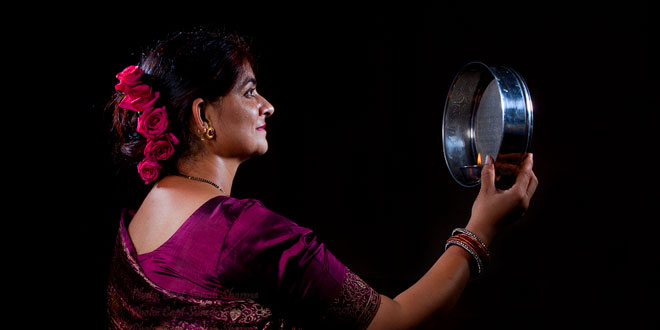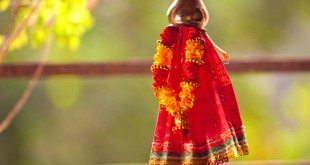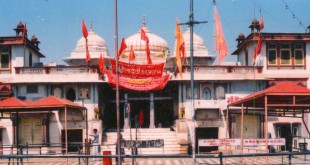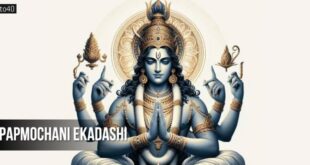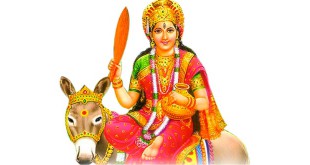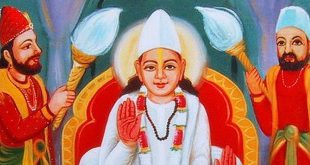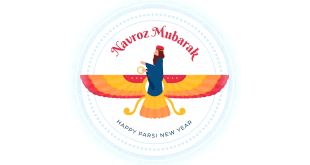Karwa Chauth: Most Important Festival of Indian Women
Karwa Chauth is a very significant festival for the women of North Indian. Traditionally the Indian woman was expected to uphold family honour and repute. and in order to do that, she was compared to myriad goddesses and heroines in Hindu mythology whose personal and spiritual achievements thus set the way of life for every Indian woman who, in turn, was expected to emulate them. As a child she submitted to the dictates of the paterfamilias – the father, and after marriage to those of the husband. Her failure to do so supposedly brought doom and dishonor upon the concerned families and their genealogical ramifications.
The Notion of Hindu Female Virtue:
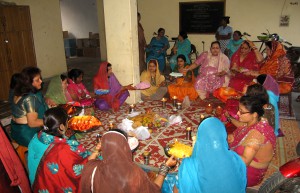 The notion of female chastity, respectability, tolerance and demureness slowly but surely seeped into every layer of the Hindu society and literature, and great care was taken to glorify the woman, while the reigns of social control were firmly held by the mikado of morality – the male. In such a social construct, the woman’s identity hinged first on that of her father, and later and more importantly on that of her husband. Therefore, in certain pockets of India, a widow was expected to immolate herself on the funeral pyre of her departed husband – an act hailed by many that guaranteed her the status of an ‘exalted woman’, a devi (roughly translated as a demigoddess).
The notion of female chastity, respectability, tolerance and demureness slowly but surely seeped into every layer of the Hindu society and literature, and great care was taken to glorify the woman, while the reigns of social control were firmly held by the mikado of morality – the male. In such a social construct, the woman’s identity hinged first on that of her father, and later and more importantly on that of her husband. Therefore, in certain pockets of India, a widow was expected to immolate herself on the funeral pyre of her departed husband – an act hailed by many that guaranteed her the status of an ‘exalted woman’, a devi (roughly translated as a demigoddess).
Hence, not only was her status, but even the mere survival of the woman was dependent on that of the man. The corollary was that the woman did everything within her means to ensure the well being of her pati parmeshwar, or ‘husband almighty’.
Festival of Karwa Chauth:
The festival is celebrated nine days before Diwali, or the festival of lights, on the fourth day of the waning moon in the Hindu month of Kartik, around October-November. Married women, old and young, begin their fast on the day of Karwa Chauth well before sunrise (around 4 a.m.), and eventually partake of food and water only after spotting the moon, which generally rises at about 8.30 p.m. But this is not to say that it is a solemn day solely symbolic of privation, as a good measure of festivity, rituals and merriment complement its more serious implications. In fact many women do not adhere very strictly to the guidelines laid down for the fast, and while they choose to abstain from food, they drink water, tea and coffee.
The Celebrations:
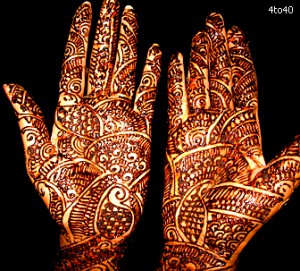 The preparations for Karwa Chauth start the day before the festival. Newly wedded brides get beautifully wrapped baskets with the sargai (the food to be eaten before sunrise) from their mothers-in-law. The fasting women of the neighborhood get together before sunrise to eat the sargai that mainly consists of thirst quenching foods like fruits, along with a main course of potatoes eaten with hot puris (a deep-fried Indian bread). Traditionally the newly wed woman spent the day before the fast in her mother’s house and came to her mother-in-law’s house only on the day of Karwa Chauth.
The preparations for Karwa Chauth start the day before the festival. Newly wedded brides get beautifully wrapped baskets with the sargai (the food to be eaten before sunrise) from their mothers-in-law. The fasting women of the neighborhood get together before sunrise to eat the sargai that mainly consists of thirst quenching foods like fruits, along with a main course of potatoes eaten with hot puris (a deep-fried Indian bread). Traditionally the newly wed woman spent the day before the fast in her mother’s house and came to her mother-in-law’s house only on the day of Karwa Chauth.
Karwa Chauth: A Festive Occasion
The day of Karwa Chauth is an out-and-out holiday for women when they fuss over themselves endlessly. They wear bright and beautiful clothes, don’t scrimmage on their jewellery, pamper themselves by buying bangles and get someone to draw intricate patterns with henna on their palms and feet. This is a perfect time to indulge in such practices as they are spared from doing the routine household chores on Karwa Chauth. Though of course, such is the case with only the privileged few, as most women, homemakers or homemakers-professionals are required to work like they would on any other day.
Shops selling sweets do brisk business as they usually would during most other festivals in India, thanks to mothers who customarily send baya, or sweets, money, clothes and a karva or small earthen pitcher, to their married daughters’ houses. The mother-in-law or any elderly women of the house who may even be a widow accepts the baya. Children are exceptionally charged on this day and generally prance about all over the house. Thus, the festival of Karwa Chauth involves not only the married women but other members of the household as well.
Karwa Chauth Puja Ceremony:
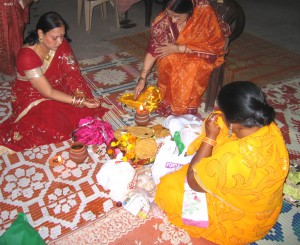 A sudden flurry of activities in the evening indicates that the preparations for the big puja (prayer ceremony) are afoot. The women of the neighborhood usually gather in someone’s house and perform the puja together. A small area is prepared for the ceremony that can be performed in any part of the house as well as in the open. A small square platform is placed against the wall and kharia matti (powdery mud) is used to cleanse, make anew and decorate the puja area. An idol of A sudden flurry of activities in the evening indicates that the preparations for the big puja (prayer ceremony) are afoot.
A sudden flurry of activities in the evening indicates that the preparations for the big puja (prayer ceremony) are afoot. The women of the neighborhood usually gather in someone’s house and perform the puja together. A small area is prepared for the ceremony that can be performed in any part of the house as well as in the open. A small square platform is placed against the wall and kharia matti (powdery mud) is used to cleanse, make anew and decorate the puja area. An idol of A sudden flurry of activities in the evening indicates that the preparations for the big puja (prayer ceremony) are afoot.
The women of the neighborhood usually gather in someone’s house and perform the puja together. A small area is prepared for the ceremony that can be performed in any part of the house as well as in the open. A small square platform is placed against the wall and kharia matti (powdery mud) is used to cleanse, make anew and decorate the puja area.
An idol of Gaur Mata or Goddess Parvati, the consort of Shiva (the Destroyer in the Hindu Holy Trinity of Creator-Preserver-Destroyer) is placed on the consecrated spot. Traditionally, the tiny image of Gaur Mata was made from cow dung, though nowadays pictures or idols of Parvati are the norm.
Karwa Chauth Story:
About an hour before moon rise, the women place their bayas over their karvas in a plate and assemble around the puja area to pray while an elderly lady narrates a tale about a young woman who by an unfortunate twist of fate was tricked into breaking her fast. The husband drops dead the very instance his wife breaks the fast. Enraged at the deception that led to her husband’s death the girl implores Gaur Mata to resurrect her husband. The husband finally comes back to life after a period of seven Karva Chauth during which time the young girl neither eats nor drinks. Thus the bride with her unflinching love for her husband and belief in Goddess Parvati achieves the ‘impossible’. After the story is read out to everyone, the women exchange their respective karvas till each one gets her own karva back, while chanting the following:
“Addey-addey Krishna Pakshe Var
Tith Karva Chauth
Manse hain apne suhag ke liye
Yeh karva, mattri, halwa, sari, nagdi
Apne suhag ka liye rani ka sa raj dena
Gaur ka sa suhag dena Shri Krishna nimant.”
Chanting and Praying For Well Being of Their Husbands:
The chant is a prayer for the well being of the husband and for marital bliss. The puja ends with the women showering rice and vermilion on Parvati and seeking her blessings. The younger women touch the feet of the elders, seek their blessings and offer their baya to them.
Following this one of the women goes with a plate decorated with lit earthen lamps and a container of water to see if the moon has risen. The moon is not to be seen directly but through a fine mesh or sieve. Water is offered to the moon seven times by each of the fasting women as they all hum a chant.
Though the women are allowed to break their fast after they see the moon, it is preferred if they can also see the faces of their husbands before they eat or drink. So the married men scurry back home from work as soon as possible on this day. The family sits down for a grand vegetarian meal that ideally should exclude rice, lentils, garlic and onions, to celebrate the festival of Karva Chauth.
- करवा चौथ का चाँद: हिंदी कविता
- Karva Chauth Facebook Covers
- Karva Chauth Songs: Thali & Ark Song
- Gujarat Women get set for Karva Chauth
- Karva Chauth: Bollywood Bahus Fasting in fashion
- Karva Chauth Festival Images & Stock Photos
- Karwa Chauth Puja
- Karwa Chauth History
- First Karwa Chauth
- Karwa Chauth Customs & Traditions
- Karwa Chauth Fast
- Karwa Chauth Mehndi
- Karwa Chauth Katha
- Karwa Chauth Legends
- Karwa Chauth Rituals
- Karwa Chauth: Maiden Fasting
- Karwa Chauth Significance
- Karwa Chauth Thali Decoration
- Karwa Chauth Greetings
- Karwa Chauth SMS & Love Messages
- Karwa Chauth Celebrations Warm Up In Kanpur
- What is the Origin and Significance of Karwa Chauth?
 Kids Portal For Parents India Kids Network
Kids Portal For Parents India Kids Network
